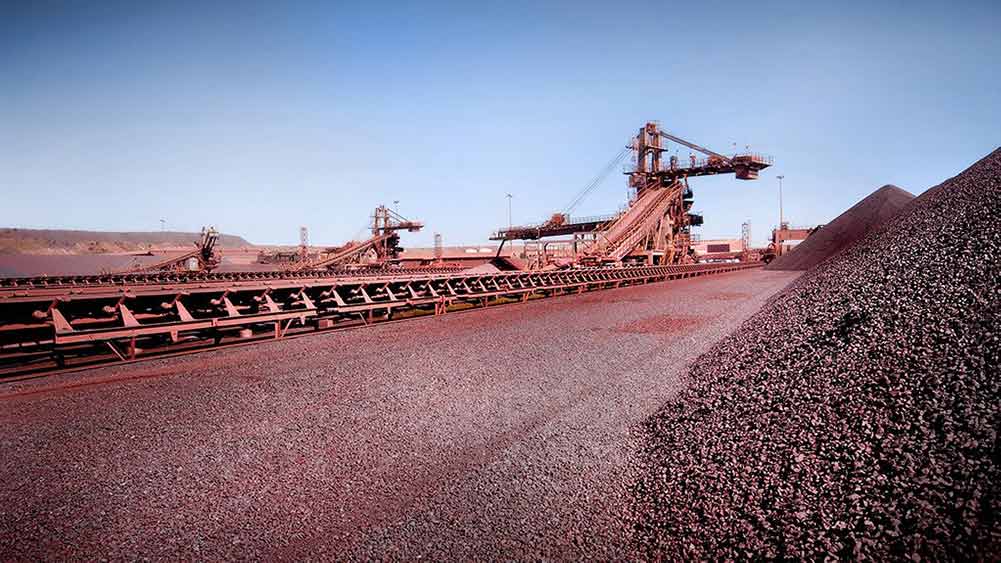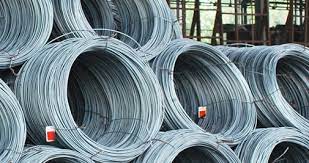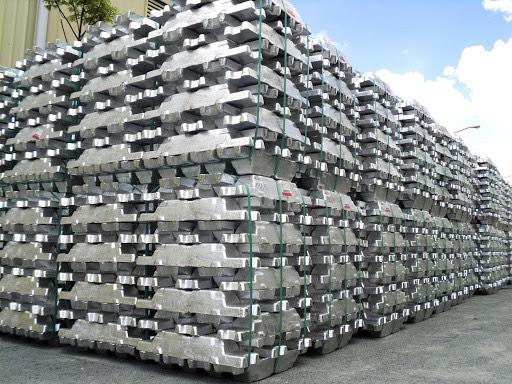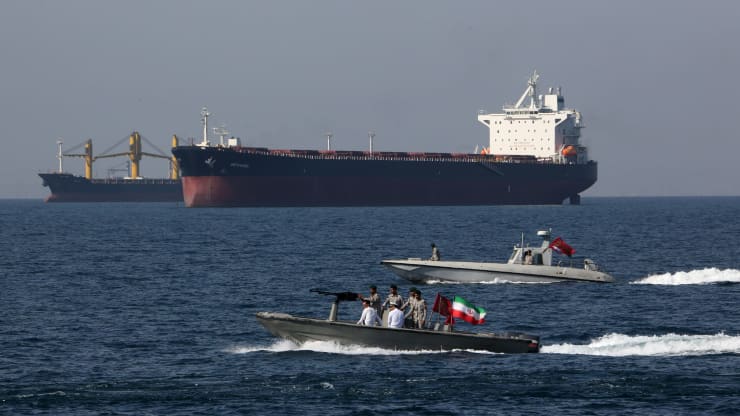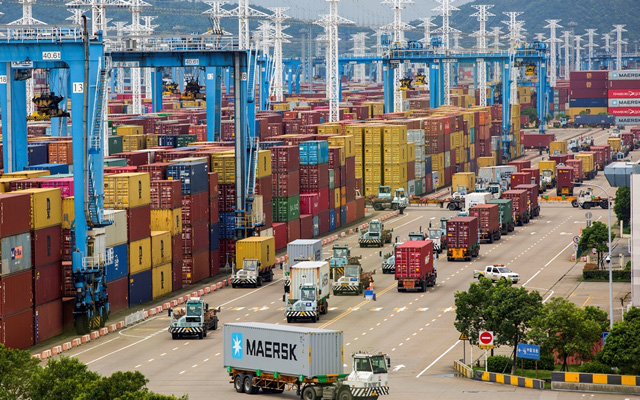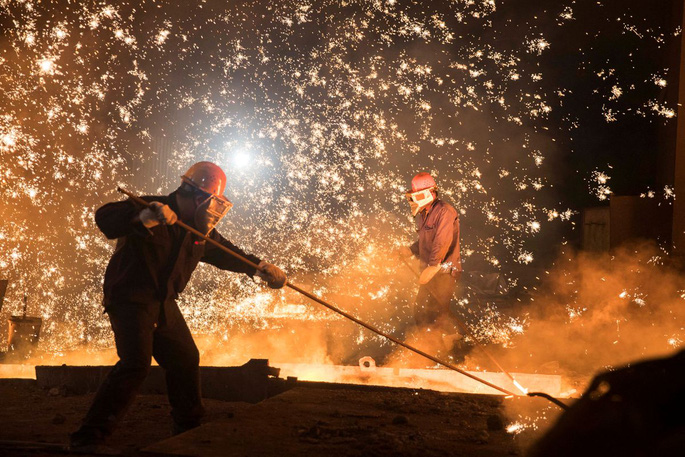Workers work on a high-voltage transmission tower in China. (Photo: Getty Images).
Fossil fuel prices are so high globally that some commodity experts call the current situation an “energy crisis” that could hit US consumers hard.
The current situation also impacts energy policy as the world tries to end its dependence on crude oil and switch to renewable energy.
Energy assets – from natural gas contracts to crude oil – are trading around multi-year highs, particularly notable for their magnitude and severity.
Data collected until 14h on 14/10.
“It’s as if all the worst-case scenarios are happening. It’s a story with many facets,” said Helima Croft, head of commodity strategy at investment bank RBC. “.
Why is the world in an energy crisis?
So what is the energy crisis and why is the world in this situation?
Jeffrey Currie, head of commodity research at Goldman Sachs, explained that the energy crisis is simply a phenomenon where “there is not enough energy supply to meet demand”.
The rise in energy prices has exacerbated concerns about persistent inflation.
This time, rising energy prices are being blamed on a series of events. These include: Economies opening up after the pandemic, China’s decisions, concerns that energy producers are not increasing output enough, and the shift to renewable energy sources, while investing on fossil fuels decline.
Indeed, COVID-19 may have accelerated the trend toward less investment in fossil fuels. In 2020, the closure of countries to prevent the spread of the virus has dealt a severe blow to crude oil production, according to data from the International Energy Agency (IEA).
China’s role
China is the world’s largest importer of energy products. Reports and data show that China has been caught off guard as post-COVID-19 energy demand spikes dramatically. China is forced to use the dirtiest coal in the world, despite its efforts to reduce carbon emissions.
The Financial Times notes that coal-fired power plants account for about 70% of China’s electricity production, but the country is severely fueled by the closure of factories and coal mines, partly for environmental reasons. .
In addition, China banned coal imports from Australia a year ago due to tensions between the two countries, limiting its ability to procure the fuel. But if trouble mounts, some predict China could lift its ban on Australian coal.
China is rushing to increase coal imports. In September, Beijing bought 32.88 million tonnes of coal, up 76% from a year earlier, according to data from the country’s General Administration of Customs.
Russia’s role
Russia is accused of amplifying the energy crisis by restricting global exports to push prices up even further. Russian President Vladimir Putin denies these claims and says that Russian gas producer Gazprom is complying with existing contracts to supply gas to Europe.
“The European gas market seems unbalanced and difficult to predict,” Putin said.
Russia is accused of taking advantage of the situation to win approval for Nord Stream 2, a natural gas pipeline whose purpose is to deliver fuel to the European Union that no longer needs Ukraine.
According to Reuters, Nord Stream 2 will double Russia’s pipeline gas export capacity through the Baltic Sea to 110 billion cubic meters.
But RBC’s Croft suspects that Russia still won’t have the capacity needed to meet Europe’s current needs: “Even if Nord Stream 2 is miraculously green-lit, Russia cannot increase production surge capacity to satisfy current demand”.
Chain reaction
China’s coal purchasing activities have caused coal prices to skyrocket. On October 13, an important coal futures contract rose to a record high of 1,640 yuan per tonne ($254.44).
Expensive coal prices force energy users to switch to potentially cheaper or more readily available options such as fuel oil and natural gas.
“As we are witnessing an unusually cold winter in Asia, supply is shifting to the continent instead of European natural gas reserves,” Ms Croft said.
Goldman Sachs researcher Currie said that coal prices have risen sharply after what looks like an end in this age of green energy. He points out that Goldman and several other research firms stopped monitoring the coal market a few years ago.
“We don’t even have a coal analyst… We eliminated this position in 2014,” he revealed.
Mr. Currie said that because the energy market is inherently unbalanced, only a factor that is not too large is enough to push the market out of control.
European energy crisis
In the UK, the government is transitioning to clean energy sources such as offshore wind power plants. But a quiet summer has resulted in energy demand exceeding supply.
Difficulties in transporting natural gas due to labor shortages and other reasons made the crisis worse.
As a result, natural gas futures prices in the region have increased parabolic in recent months.
Data collected until 14h on 14/10.
Prospects
Expert Croft humorously likened that investors need to become meteorologists, because the degree of coldness of this year’s winter can be a determining factor in which direction the energy crisis will unfold. . Cold winters can boost demand for natural gas and heating fuels, driving prices even higher.
Researcher Currie likens the energy crisis to the “revenge of the old economy” as so many countries have accelerated the transition to electric vehicles and more environmentally friendly energy sources.
“Capital has been diverted to the new economy and stifled what was needed to develop the supply base in the old economy, for example petroleum fuels.”
That’s why Goldman Sachs sees the current crisis as having the potential to create a “decade-long commodity supercycle.”
Goldman Sachs previously projected the current super cycle could be underpinned by the transition to renewables. However, it is unlikely that the transition will be as smooth as predicted by clean energy advocates.
In America
U.S. consumers are likely to feel the hardest hit when gasoline prices rise sharply, especially if prices hit $4 a gallon, said Robert Yawger, director of energy futures at Mizuho Securities. This is equivalent to WTI oil reaching $87 per barrel, Mr. Yawger said.
He also said that heating oil will be the next commodity that speculators jump into as winter approaches in the US.
T&G International Joint Stock Company
Address: 352 Hue Street, Le Dai Hanh Ward, Hai Ba Trung District, Hanoi
Hotline: 0345786803
Email: hrm@tginterjsc.com
Website: http://tginternationaljsc.com








